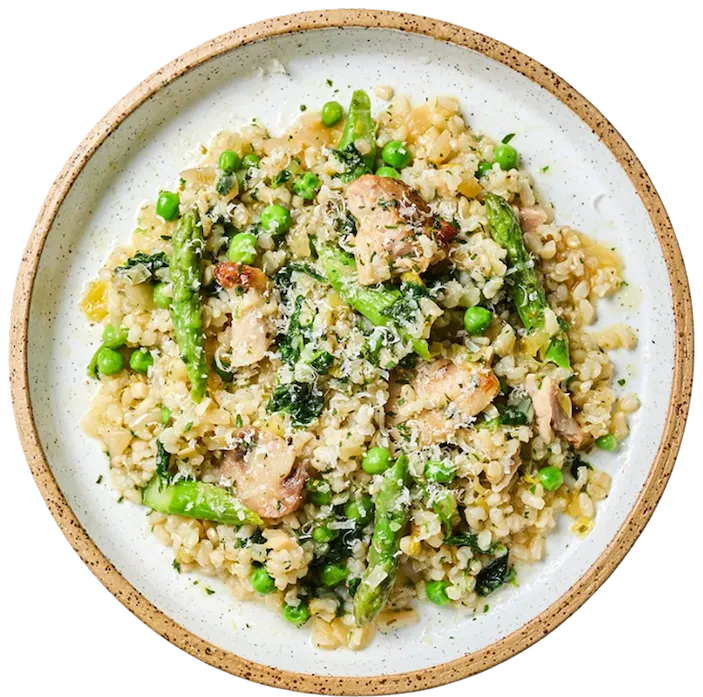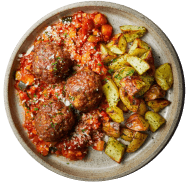Cholesterol: FAQs and Guide
What Is The Difference Between LDL and HDL Cholesterol?
And what makes cholesterol "good" or "bad"? Our guide covers FAQs such as what cholesterol is, how to lower cholesterol through diet, and the difference between cholesterol types.
Take home message...
Too much “bad” (LDL) cholesterol increases the risk of cardiovascular diseases so opt for “good” (HDL) cholesterol found in olive oils, avocado, nuts, seeds and oily fish.
What is cholesterol?
Cholesterol is a blood lipid (fatty substance) that is produced in the liver. It is important for cell and hormone synthesis, and it helps with digesting and absorbing fats from our dietary intake – in fact, it’s used in every cell in the human body and it’s particularly vital for the brain, nerves and skin.
There are two main types of blood cholesterol (lipoproteins):
- “Good” cholesterol (high density lipoproteins (HDL cholesterol)) - removes cholesterol from blood that you don’t need to the liver. It’s then broken down and excreted.
- “Bad” cholesterol (non-high-density lipoproteins (non-HDL cholesterol) or low-density lipoproteins (LDL)) - transports cholesterol to cells in the body from the liver. When there is a buildup, it can block or narrow your arteries which increases the risk of having a heart attack or stroke.
Why Do I Have High Cholesterol?
The main factors that contribute to raised cholesterol levels are:
- A dietary intake high in saturated fat
- Low activity levels
- Genetic conditions
- Smoking
- Excess body fat, especially around the waistline
- Some medications
- Medical conditions such as liver problems
- Ethnic background
- Menopause
- Getting older
How Can I Lower My Cholesterol Levels?
- Alongside getting more active [1] and seeking support to stop smoking [2], if necessary, eating a healthy balanced diet that is higher in unsaturated fats (think olive oils, avocado, nuts, seeds and oily fish) instead of saturated fats (fatty cuts of meat, butter, ghee, biscuits, pastries, cheese, coconut oils, and takeaways) can help to reduce cholesterol levels.
- If you can tolerate a diet that is high in fibre, aim to have one to two large handfuls of vegetables with each meal (even have them as part of a snack), switch to wholegrains, go for high fibre foods such as oats, pulses, seeds and (unsalted) nuts.
- Ensure to compare and to read the food labelling and follow the ‘’traffic light’’ system. Avoid foods that are high (red) in saturated fat; these contain more than 5g of saturated fats per 100g. Go for foods that are low (green) in saturates – 1.5g or less per 100g [3].
Some Final Thoughts
In summary, too much “bad” (LDL) cholesterol increases the risk of cardiovascular diseases so opt for “good” (HDL) cholesterol. People respond differently to dietary cholesterol, the higher the amount of cholesterol eaten, the higher the blood cholesterol [4]. Currently there is no robust test to check this so it’s best for all adults to reduce saturated fat intake as much as possible.
References
[2] )Overview | Tobacco: preventing uptake, promoting quitting and treating dependence | Guidance | NICE
[3] How to eat less saturated fat - NHS - NHS
[4] Cholesterol | The Nutrition Source | Harvard T.H. Chan School of Public Health
For further information
related content
more content: Heart Health
browse our ranges.
choose from one of our ranges or personalise your own menu from 60+ meals.
- low FODMAP

- eat well, live well programme

- gluten free

- high protein

- weight management

- ibs

- lowest calorie

- lower carbs

- mediterranean

- smaller range

- pcos

- lean + lighter

- menopause

- heart healthy

- full menu

- gift cards